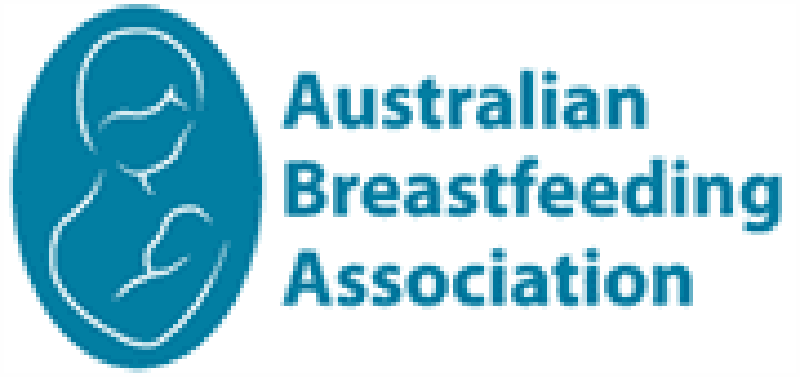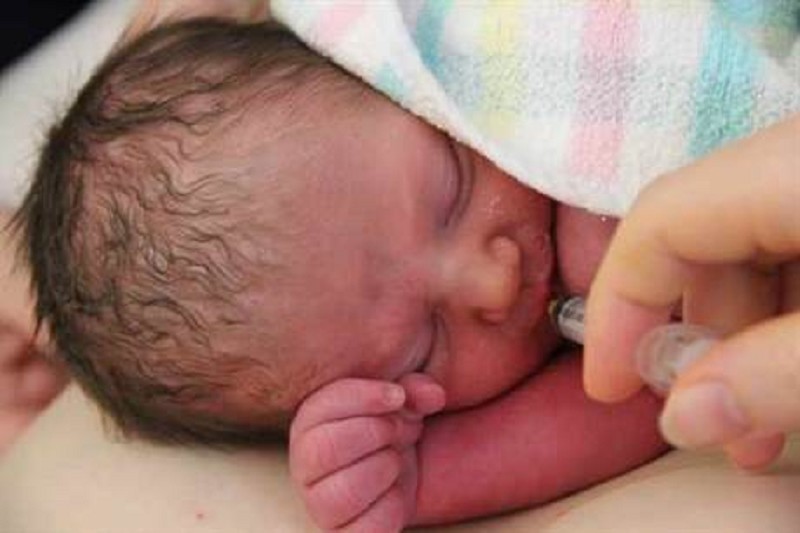Breastfeeding knowledge quiz

This quiz was designed to test your knowledge of breastfeeding and the Australian Breastfeeding Association services and support available. I have designed the quiz as part of an assessment 403/404, task 3 of 10280NAT Certificate IV in Breastfeeding Education.
You are welcome to exit this quiz at any time. Please read the questions carefully, and note that in cases where 'All of the above' is to be selected, you should only select that option (i.e. Not all answers AND 'All of the above'). If any of the questions or associated answers cause distress of any kind for you, please contact the ABA helpline (1800 mum 2 mum) or alternatively Lifeline crisis support (13 11 14).
Thank you for your time.
Aimee Sing (ABA Breastfeeding Counsellor Trainee)
This quiz was designed to test your knowledge of breastfeeding and the Australian Breastfeeding Association services and support available. I have designed the quiz as part of an assessment 403/404, task 3 of 10280NAT Certificate IV in Breastfeeding Education.
You are welcome to exit this quiz at any time. Please read the questions carefully, and note that in cases where 'All of the above' is to be selected, you should only select that option (i.e. Not all answers AND 'All of the above'). If any of the questions or associated answers cause distress of any kind for you, please contact the ABA helpline (1800 mum 2 mum) or alternatively Lifeline crisis support (13 11 14).
Thank you for your time.
Aimee Sing (ABA Breastfeeding Counsellor Trainee)
Identify which of the following is NOT information or support that the ABA provides:
Health advice specific to a mother or baby
Information on mixed feeding
Information on breastfeeding
Support for breastfeeding and mixed feeding
Support for weaning from breastfeeding
Breastfeeding and breastmilk is important because:
Breastmilk contains all the food and drink your baby needs for their first 6 months of life
Colostrum and breastmilk protect babies against infection
Breastmilk helps ensure normal brain development
Breastfeeding reduces the risk of ovarian and breast cancer in mothers
Breastfeeding reduces the risk of Sudden Infant Death Syndrome (SIDS)
Breastfeeding can delay the return of fertility
Babies who are not breastfed are at increased risk of obesity
All of the above
The World Health Organisation (WHO) and National Health and Medical Research Council (NHMRC) recommend exclusive breastfeeding for the first x months and breastfeeding alongside complementary foods until y years. Choose the correct option from those below:
X = 4, y = 2
X = 6, y = 1
X = 4-6, y = 2+
X = 6, y = 5
Identify which of the below are factors enabling breastfeeding that mothers may encounter:
Criticisms of breastfeeding, particularly in ‘older’ children
Poor family and social support to breastfeed
Social acceptance of breastfeeding as the biological norm
Lack of access to supportive childcare
Supportive health professionals, family and friends
Unsupportive workplace or no area to express milk in workplace
Lactation difficulties
Easy access to lactation aids and lactation consultants as needed
Allocated spaces for breastfeeding in public
Identify which of the below are factors that are barriers to breastfeeding that mothers may encounter:
Criticisms of breastfeeding, particularly in ‘older’ children
Poor family and social support to breastfeed
Social acceptance of breastfeeding as the biological norm
Lack of access to supportive childcare
Supportive health professionals, family and friends
Unsupportive workplace or no area to express milk in workplace
Lactation difficulties
Easy access to lactation aids and lactation consultants as needed
Allocated spaces for breastfeeding in public
Choose which of these statements are FALSE:
Cradle, cross-cradle, straddle and underarm (football) holds and lying down or laid back breastfeeding are all positions that can allow for good attachment at the breast
For optimal attachment sit comfortably, hold baby close (chest to chest), brush areola along babies lip, when babies mouth opens and tongue covers lower gum bring baby to breast (chin to breast) and let baby close mouth over nipple
A tongue tie can be responsible for poor attachment at the breast and will always need to be revised for successful breastfeeding
You might notice the let-down reflex as tingling, sudden fullness, milk dripping from other breast or a change in baby’s sucking to a suck-swallow pattern
Baby is receiving enough breastmilk if they have 5 very wet disposable nappies in 24 hours, good skin colour and muscle tone, some weight gain and growth and baby is alert yet content and meeting developmental milestones
Guidelines for infant growth say baby should regain birth weight by 2-3 weeks, birth weight doubles by 4 and triples by 13-15 months, birth length and head circumference increases 1.5 times and 11cm in 12 months respectively
Breastfeeding never hurts when baby is attached and positioned correctly
Identify which are potential causes for common breast and nipple issues that mothers may experience while breastfeeding:
Feeding baby before they start crying, often (on demand) and alternate breasts each feed
Tight tops, wearing incorrectly fitted bras, restricting feeds and not changing breast pads often enough
Allowing or enabling incorrect positioning or attachment
Massaging breasts, applying warmth to get milk flowing, making yourself comfortable and relaxing for each feed
Limiting comfort sucking, offering the less sore side first, trying different feeding positions
Suddenly increasing the amount of solids or fluids besides breastmilk that a baby is provided
Resting as often as possible, eating well and staying healthy
Identify situations that may result in mothers being unable to establish or sustain breastfeeding:
Unable to produce a full milk supply due to factors like prior breast reduction surgery
Lack of support to breastfeed
Premature baby and consequent difficulties with latching baby
Poor latch (tongue tie or other factors) resulting in inadequate milk transfer and subsequent low supply
Illnesses of mother or baby that make breastfeeding difficult, unsustainable or otherwise dangerous for mother or baby (e.g. HIV, tuberculosis, allergies or intolerances)
Caesarean section or separation at birth
Adopted baby and preference not to induce lactation
All of the above
Identify the risks of using breastmilk substitutes
Reduces mothers breastmilk supply
Know how much milk baby has ingested
Potential for contamination and consequent infection of baby
Lower IQ
Increased risk of breast and ovarian cancer in mother
Baby can be fed by other people giving mum time to rest
Possibility of overfeeding, running out of formula or not being able to heat milk
Less painful for mother and often easier to establish
Easier in some instances where baby has intolerances or allergies
Increased risk of SIDS, obesity, dental malocclusions
Increased risk of infections (gastrointestinal, ear and respiratory)
Identify which of these places provide sources of information and support for using breastmilk substitutes
Australian Breastfeeding Association website
Australian Breastfeeding Association helpline (1800 mum2mum)
NHMRC brochure ‘Infant feeding guidelines’
WHO guide ‘How to Prepare Formula for Bottle-Feeding at Home’
Unicef’s ‘Guide to Bottle Feeding: How to Prepare Infant Formula and Sterilise Feeding Equipment to Minimise the Risks to your Baby’
All of the above
Identify which of the following are REASONS mothers choose to relactate or induce lactation:
Baby weaned earlier than mother wanted them to
Expressing breastmilk to improve milk supply
Always put baby to the breast and if baby is unable to latch, try various strategies like putting a bottle teat or nipple shield over nipple, making bottle feeds more like breastfeeds (close to body etc) and triggering let-down prior to putting baby to the breast
Baby is unwell on formula
Supplemental Nursing System (SNS)
Drugs and alternative therapies to increase milk supply
Child is sick and breastmilk would provide immune protective factors to improve their health
You are not the birth mother of your baby but wish to breastfeed
Identify which of the below are STRATEGIES that can be used for relactating or inducing lactation:
Baby weaned earlier than mother wanted them to
Expressing breastmilk to improve milk supply
Always put baby to the breast and if baby is unable to latch, try various strategies like putting a bottle teat or nipple shield over nipple, making bottle feeds more like breastfeeds (close to body etc) and triggering let-down prior to putting baby to the breast
Baby is unwell on formula
Supplemental Nursing System (SNS)
Drugs and alternative therapies to increase milk supply
Child is sick and breastmilk would provide immune protective factors to improve their health
You are not the birth mother of your baby but wish to breastfeed
Identify which of these strategies and or suggestions can be used to establish and maintain breastfeeding or to negotiate breastfeeding hurdles that mothers may experience:
Attend a breastfeeding education course
Initiate skin to skin soon after birth
Seek the support of other breastfeeding mothers, groups and health professionals
Avoid using pacifiers before breastfeeding has fully established
See an Internationally Board Certified Lactation Consultant (IBCLC)
Breastfeed baby on demand
Use lactation aids when necessary
Call the ABA helpline on 1800 mum2mum
Avoid using artificial baby milk (formula), even for ‘top-ups’ - Implement waking strategies as needed for premature or sick babies - Work alongside health professionals as necessary - Eat well, drink lots of water and rest often
All of the above
Which of the following are lactation aids?
Nipple shields
Supplemental Nursing System (SNS)
Breast pump
Cup feeder
Syringe
Special needs feeder (Haberman feeder)
All of the above
In which of the following situations can a Haberman feeder (special needs feeder) be used:
Any sucking disorders
Cleft palate
In instances where baby has swallowing difficulties
All of the above
Which of the following is NOT a sign that your baby is ready for introducing family foods/solids?
Baby still has tongue thrust reflex
Baby shows interest in foods
Baby reaches and grabs for food and brings these to their mouth
Baby can sit up unassisted
Identify which of the following foods can be introduced early on to babies when there are no allergy or intolerance issues present:
Caffeinated drinks
Fruit
Meat or alternatives
Ice cream
Fish
Vegetables
Identify some of the reasons a mother might want to wean their baby from breastfeeding:
Mother is uncomfortable feeding
Mother is unwell with a disease or requiring treatment that would make breastfeeding dangerous, uncomfortable or otherwise unsustainable
Mother feels baby is old enough and ready to wean
Mother wants to switch to formula feeding for personal reasons
Mother wants baby to sleep longer at night
All of the above

Please continue to answer a couple of survey questions providing feedback on this quiz (cute baby picture to keep you going ;) )
Please continue to answer a couple of survey questions providing feedback on this quiz (cute baby picture to keep you going ;) )
I feel this quiz improved my knowledge about breastfeeding:
Strongly disagree
Disagree
Neither agree nor disagree
Agree
Strongly agree
I feel I will be able to make more informed decisions about breastfeeding based on the information I learned from this quiz:
Strongly disagree
Disagree
Neither agree nor disagree
Agree
Strongly agree
Please use this space to elaborate on the prior two answers about how this quiz affected your knowledge and ability to make informed decisions around breastfeeding. Additionally, please provide some information about your knowledge regarding breastfeeding (i.e. Are you an ABA counsellor, a IBCLC, a mother to a breastfed baby, a Dr etc?)

Thank you for your effort and answers! I really appreciate the time you've spent on this quiz and survey :)
Aimee Sing (Breastfeeding Counsellor Trainee)
Thank you for your effort and answers! I really appreciate the time you've spent on this quiz and survey :)
Aimee Sing (Breastfeeding Counsellor Trainee)
{"name":"Breastfeeding knowledge quiz", "url":"https://www.quiz-maker.com/QPREVIEW","txt":"This quiz was designed to test your knowledge of breastfeeding and the Australian Breastfeeding Association services and support available. I have designed the quiz as part of an assessment 403\/404, task 3 of 10280NAT Certificate IV in Breastfeeding Education. You are welcome to exit this quiz at any time. If any of the questions or associated answers cause distress of any kind for you, please contact the ABA helpline (1800 mum 2 mum) or alternatively Lifeline crisis support (13 11 14).Thank you for your time.Aimee Sing (ABA Breastfeeding Counsellor Trainee), Identify which of the following is not information or support that the ABA provides:, Breastfeeding and breastmilk is important because:","img":"https://cdn.poll-maker.com/20-808241/aba-logo-email.png?sz=1200"}
More Quizzes
Avaliação -Gilead
22110
KKU Medical terms - Abbreviations
14713
Primary 4 Verbal (FW5) Day 3 CBT 2 (tklesson.com)
1050
STD - 5 Computer Ch - 1
13686
Concrete or Abstract? Master Nouns with This
201036483
Test PowerPoint Skills: Ultimate Microsoft PowerPoint
201041543
Free Energy Conversion
201025722
Free Fossil Fuels & Humans
201025961
Supply Chain Management
15832239
Quiz Wedgie: Find Your Perfect Embarrassing Prank!
201030342
Baby Toys: Can You Ace This Toy Trivia Challenge?
201066091
Art Since 1940
15825261